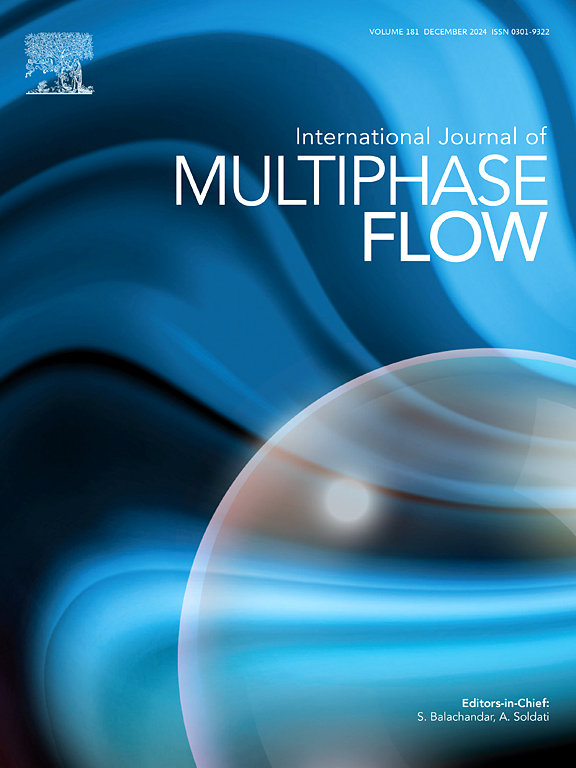Enhanced modeling for resolved morphologies in co-current stratified wavy pipe flows
IF 3.8
2区 工程技术
Q1 MECHANICS
International Journal of Multiphase Flow
Pub Date : 2025-06-29
DOI:10.1016/j.ijmultiphaseflow.2025.105333
引用次数: 0
Abstract
This paper presents the development and validation of a model for simulating stratified flows with wavy interfaces within the two-fluid framework. A key focus is the interfacial momentum transfer closure for large-scale interfaces (LSIs), which is critical for Euler–Euler multiphase flow simulations involving distinct phase morphologies. A systematic evaluation of existing momentum transfer models for resolved morphologies, including those by Strubelj & Tiselj, Marschall, and a blended approach, is conducted alongside the proposition of a new Modified Mixture Model (MMM) for LSIs. The numerical simulations are compared against experimental data from the literature, revealing the limitations of traditional closure models for wavy flows and the impact of limited volume fraction on interfacial momentum transfer and wave growth. A novel diffusive stabilization approach is proposed, removing the inconsistencies introduced by limited phase-volume fraction in the momentum transfer modeling. The MMM model demonstrates robustness across mesh refinements, effectively capturing wave dynamics, mean water height, pressure drop, and key wave characteristics. The study also highlights the importance of turbulence damping, which increases the velocity gradients at the interface, contributing to phase decoupling and facilitating wave growth. These findings establish the MMM model as a reasonable approach for simulating stratified wavy flows.

加强了共流分层波浪管流中分解形态的建模
本文提出了一种在两种流体框架内模拟具有波浪界面的分层流动的模型的发展和验证。一个关键的焦点是大规模界面(lsi)的界面动量传递闭包,这对于不同相形态的欧拉-欧拉多相流模拟至关重要。系统评估现有的已分解形态的动量传递模型,包括Strubelj &;Tiselj, Marschall和一种混合方法,与lsi的新修正混合模型(MMM)的提议一起进行。将数值模拟与文献中的实验数据进行对比,揭示了传统波浪流闭合模型的局限性,以及有限体积分数对界面动量传递和波浪增长的影响。提出了一种新的扩散稳定方法,消除了动量传递模型中有限相体积分数所带来的不一致性。MMM模型展示了网格细化的鲁棒性,有效地捕获了波浪动力学、平均水高、压降和关键波浪特征。该研究还强调了湍流阻尼的重要性,它增加了界面处的速度梯度,有助于相位解耦并促进波的增长。这些发现证明了MMM模型是模拟分层波浪流的合理方法。
本文章由计算机程序翻译,如有差异,请以英文原文为准。
求助全文
约1分钟内获得全文
求助全文
来源期刊
CiteScore
7.30
自引率
10.50%
发文量
244
审稿时长
4 months
期刊介绍:
The International Journal of Multiphase Flow publishes analytical, numerical and experimental articles of lasting interest. The scope of the journal includes all aspects of mass, momentum and energy exchange phenomena among different phases such as occur in disperse flows, gas–liquid and liquid–liquid flows, flows in porous media, boiling, granular flows and others.
The journal publishes full papers, brief communications and conference announcements.

 求助内容:
求助内容: 应助结果提醒方式:
应助结果提醒方式:


